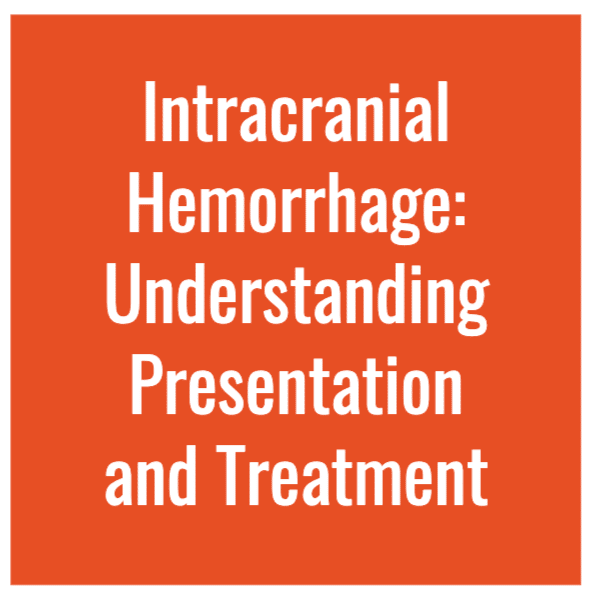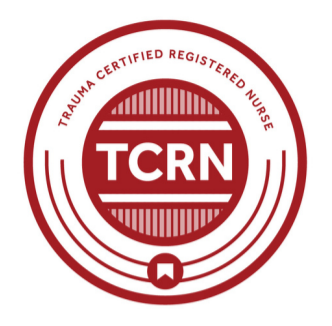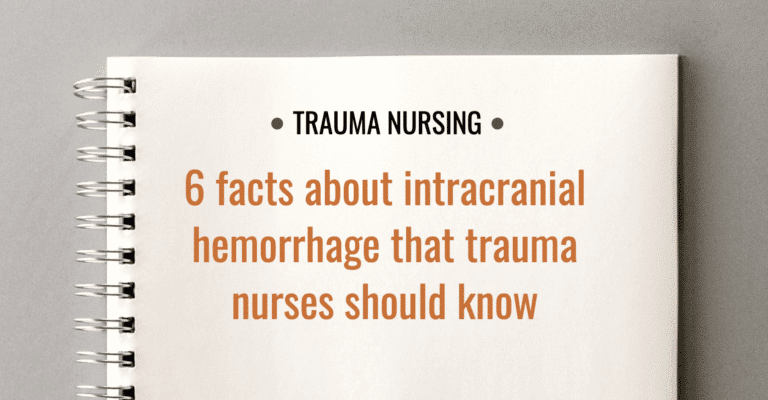Intracranial hemorrhage (ICH) is a life-threatening condition that requires prompt intervention. Nurses are often the first to recognize the changes in patient condition that can indicate ICH, so their response is critical to decreasing time to diagnosis and treatment.
Trauma and emergency nurses should be able to identify the most common types of ICH in injured patients. They should also be ready to provide early and aggressive treatment for patients with suspected ICH.
1. ICH can lead to a cascade of injuries
ICH occurs when a blood vessel ruptures in the brain, causing vascular damage and increased intracranial pressure (ICP).
Increased ICP can damage the surrounding neuronal tissue and interrupt blood flow. It can also cause herniation syndromes to occur, potentially resulting in secondary injuries.
Inflammation and clotting factors are released in response to an ICH. This can cause edema to the injured area, which usually peaks around 72 hours.
2. ICH can be caused by traumatic injury
The most common cause of ICH is hypertension. Approximately 85% of ICHs are spontaneous and are considered to be primary non-traumatic hemorrhagic stroke.
However, ICH is also associated with traumatic injury. ICH can be caused by a blunt or penetrating injury to the head, such as injuries sustained from a motor vehicle collision or fall.
The most common types of trauma-involved ICH are epidural hematoma and subdural hematoma. Other types of ICH are intracerebral hemorrhage, intraventricular hemorrhage and subarachnoid hemorrhage.
3. Patients with epidural hematoma may regain consciousness before deteriorating rapidly
Epidural hematoma is bleeding between the skull and the outer layer of the dura mater. Epidural bleeding can be arterial or venous.
Most patients with an epidural hematoma report a focal head injury. Epidural bleeds often result from injury to the middle meningeal artery. This artery may be damaged during side-impact collisions, falls and other trauma to the temporal region of the head.
Patients suffering from epidural hematoma may present with transient loss of consciousness followed by a lucid interval. The patient may be initially unresponsive and then wake up and answer questions appropriately before deteriorating rapidly.
4. Symptoms of subdural hematoma may take days or weeks to manifest
Subdural hematoma is bleeding between the dura mater and the arachnoid membrane.
Subdural bleeds most often occur spontaneously or after a penetrating head trauma. They are more common among elderly patients and those prescribed anticoagulants. Up to 25% of patients with a significant head injury develop a subdural hemorrhage.
It may take days or weeks for symptoms of a subdural hematoma to manifest. Patients may present with symptoms such as prolonged headache, confusion, altered levels of consciousness, focal motor deficits, lethargy and seizures.
5. Radiographic studies for ICH typically include non-contrast CT
Radiographic studies for intracranial hemorrhage typically include a non-contrast CT scan of the brain. CT can help determine the size and location of the hemorrhage and whether or not it is ischemic. If CT detects a hyperdense signal, it may indicate active bleeding and a higher risk of enlargement.
Following CT, stable patients may also undergo magnetic resonance angiogram or magnetic resonance imaging. These studies can be useful for diagnosing AV malformations and vascular lesions.
6. Nurses should provide early and aggressive treatment for ICH
Early and aggressive treatment of ICHs can decrease morbidity and mortality.
- When a patient presents with ICH, assess airway patency and blood pressure.
- Keeping systolic blood pressure between 120-140 mmHg can help maintain cerebral perfusion and control bleeding.
- If systolic blood pressure exceeds 140 mmHg, administer antihypertensive treatment.
- If systolic blood pressure exceeds 220 mmHg, treat aggressively using an IV infusion.
- To reduce ICP, keep the patient’s head up at 30 degrees.
- Antianxiety medication can be used to control blood pressure and decrease ICP.
- For patients with coagulation abnormalities, it is important to normalize clotting factors.
Certain patients with intracranial hemorrhage may be candidates for non-surgical treatment. However, many patients with ICH require immediate surgical intervention.
For any patient with acute neurologic deterioration from a known ICH, early contact with a neurosurgeon is important. While some patients may not need surgery, the decision whether or not to operate is made through repeat neurologic assessments and, if neuro status deteriorates, through repeat cerebral imaging.



